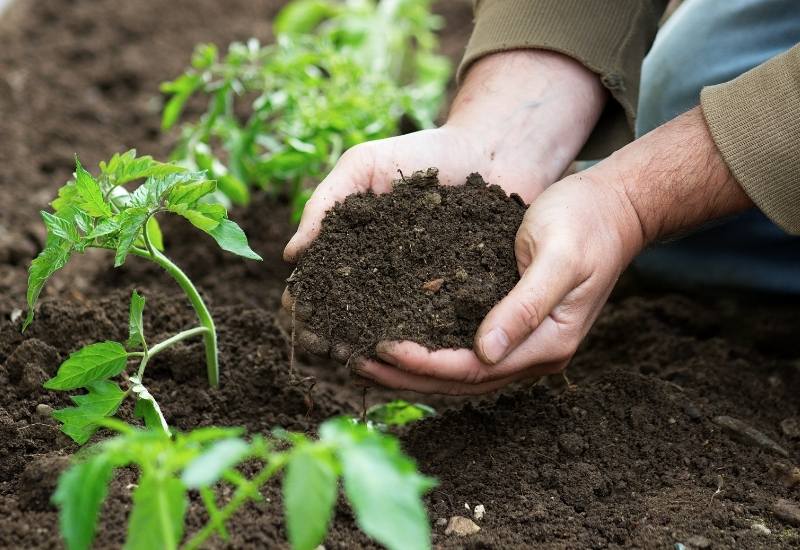
Do you ever wonder why sometimes your tomatoes thrive, and other times they don’t do so hot? One reason could be your soil’s pH. Tomatoes are an acid-loving plant, and having the right soil acidity will have a huge impact on the performance of your tomato plants.
Tomatoes grow best in soils with a pH between 6.0 and 6.8. If your soil’s pH is too high, try adding sphagnum peat moss, sulfur, or chelated fertilizers to make soil more acidic.
To to raise the pH of soil, try adding limestone, wood ash, and avoid fresh pine needles. Adding compost will help balance your soil’s pH whether your garden is too acidic or too alkaline.
Keep reading to discover why tomatoes need acidic soil, how to test your garden soil’s pH, and how to adjust your soil’s pH to create the perfect growing condition for your tomatoes.
Are Tomatoes An Acid Loving Plant?
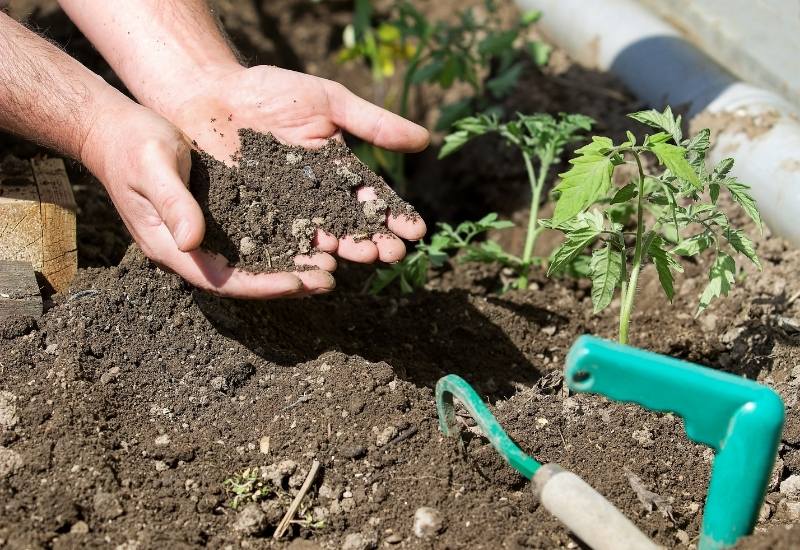
The chemical composition of your soil is very important when growing tomatoes, and this is measured by your soil’s pH levels.
The pH level of your soil tells you if your soil is acidic or alkaline and is measured on a scale from 0 to 14 with low numbers being acidic, high numbers alkaline, and 7 being neutral.
Tomatoes are an acid-loving plant, meaning that they grow best in soils with a pH below 7.0.
The Ideal Soil pH For Tomatoes
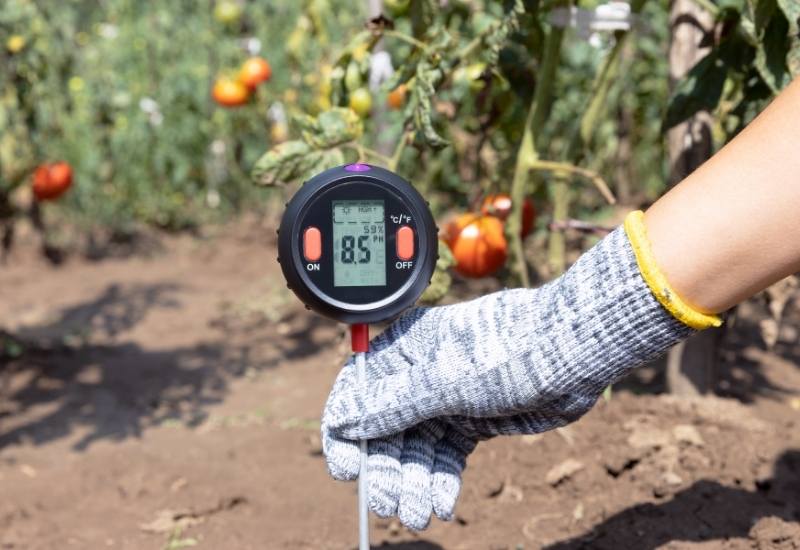
Even though tomatoes prefer acidic soil, you don’t want the soil to be too acidic. Tomatoes grow best with a soil pH between 6.0 and 6.8. However, they can go down to 5.5 and as high as 7.5 and still grow and bear successfully.
Why Do Tomatoes Need Acidic Soil?
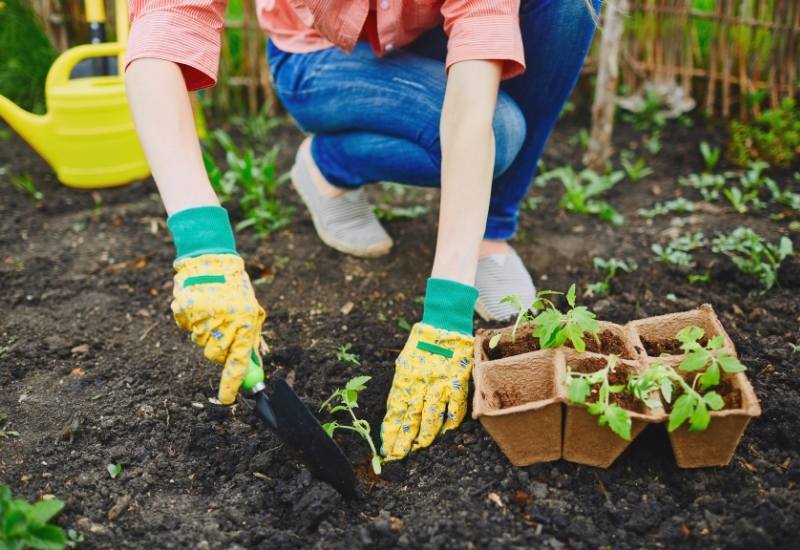
As the soil acidity changes, so does the availability of certain nutrients. When the pH is either too high or too low, certain nutrients are not in a soluble form and cannot be used by the plants.
In the case of tomatoes, iron is an important mineral to consider since tomatoes have a high iron requirement. When soil acidity is in the ideal range between 6.0 and 6.8, iron is readily available to the plant.
However, with a pH between 4.0 and 5.7, the still-present iron is no longer soluble and cannot be absorbed by the tomato plant. Alternatively, as the pH rises above 6.5 the iron is still present but has become soil-bound and your tomatoes may become iron-deficient.
This is true of many nutrients found in the soil. When the pH of the soil ranges between 4.0 and 6.0, elements such as nitrogen, potassium, phosphorous, sulfur, calcium, and magnesium all become less available.
The reduced uptake of minerals can lead to stunted growth, poor fruiting, and diseases that will significantly reduce your harvest or kill your tomato plants.
Why Is It Important To Test My Soil’s pH?
There are many reasons to test your soil’s pH levels. For example, iron deficiency has similar symptoms as manganese deficiency and also herbicide exposure. So, without a proper soil test, it is difficult to know what issue you are dealing with.
Testing your soil’s pH will remove a lot of guesswork, and allows you to provide the best soil conditions for your plants and grow the healthiest tomatoes.
How To Test The Acidity Of Your Soil
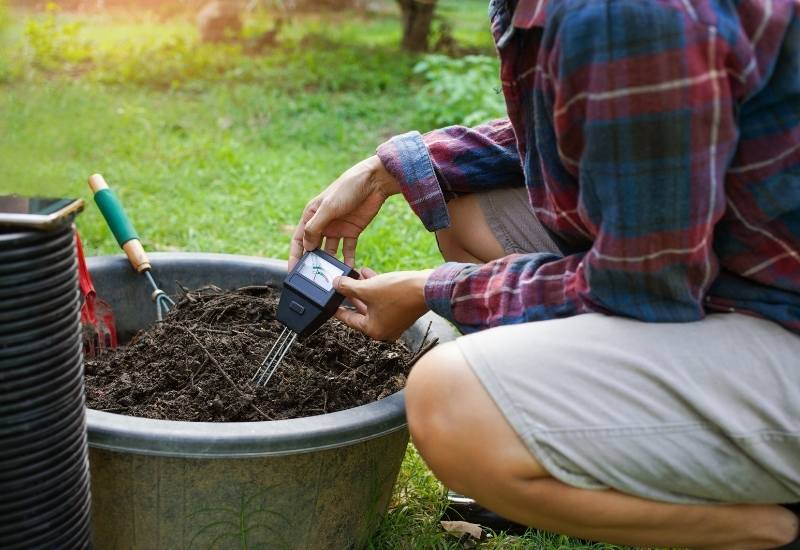
There are several ways you can test your soil’s pH levels. You and send a sample of your soil to a lab, purchase a kit to test your soil, or test your own soil with easy time-tested methods.
1: Send A Soil Sample To A Lab
Sending a sample of your soil to a lab to have it tested is by far the most accurate and thorough way to test your soil, and it is also by far the most expensive.
A laboratory will be able to test for more than just pH (such as nutrient composition, if there are any toxins present) so it is worth doing this if you want to get a complete analysis of your soil done.
To find a lab that does soil testing, contact your local agriculture extension office, garden centre, or landscaping company.
2: Buy A Soil Testing Kit
There are many different soil pH test kits available on the market for a reasonable price (under $30) and they can be quite accurate.
You can get digital readers that have a small probe that you stick in the ground, or kits that have test tubes and small capsules to test the pH and other nutrients that your soil might be lacking.
3: DIY Soil Testing Methods
If you are a do-it-yourselfer here are two old school “field tests” to check the pH levels of your soil that have been used by farmers and gardeners for many years.
Method #1. This first method uses litmus paper (also called pH test strips). You might remember these from science class in high school. Take a handful of soil from your garden, and dampen it with rainwater until you can form it into a ball.
Cut the ball in half, and squeeze a piece of litmus paper between the two halves. Wait a few minutes and then check the colour of the paper. The paper will change colour depending on the acidity of the soil. Blue will indicate alkalinity and red is acidic.
Method #2. If you have a bottle of ammonia under your bathroom sink, you can use this to check the pH of your soil. Mix a tablespoon of your soil in a glass of water.
Add a few drops of ammonia and stir it all together. Wait two hours and then check the concoction. If the water is clear then the soil is alkaline, but if the water is dark then it is acidic.
How To Make Soil More Acidic (Lower The pH)
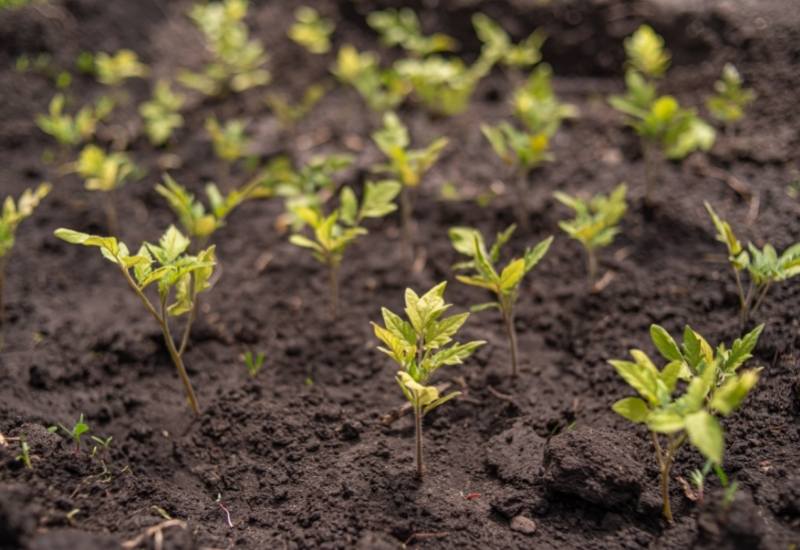
If your soil is too alkaline (with a pH over 7.0), there are many ways to naturally make your soil more acidic so your acid-loving tomatoes will thrive. Here are a few methods to lower your soil’s pH:
1: Compost

Not only does compost feed your soil and plants by adding humus and valuable nutrients, but compost will also stabilize the pH of your soil.
This means that it will balance everything out by lowering pH that is too high and lowering pH that is too low. Add lots of compost, or well-rotted manure to your garden every year and your plants will thank you.
2: Sphagnum Peat Moss
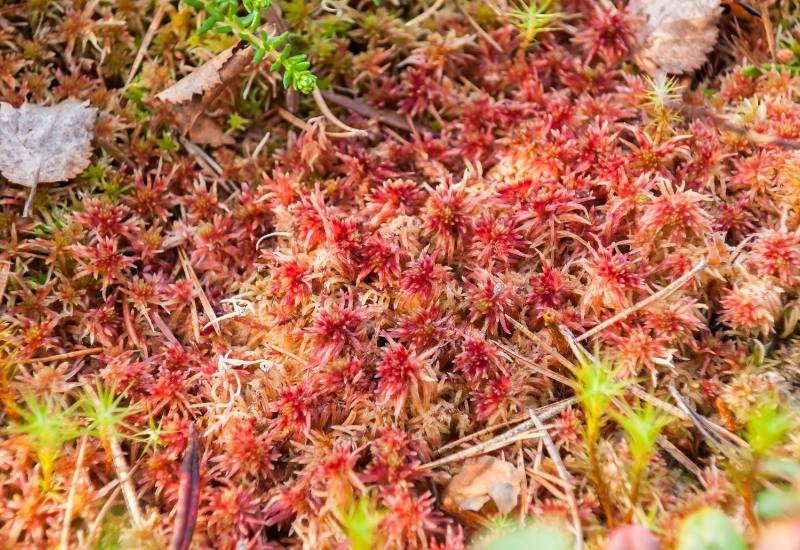
Peat moss is a slow-acting soil amendment that also adds organic matter and improves water retention and aeration in your soil.
Peat moss generally has a pH of 3.0 to 4.5. Prior to planting, add 5cm to 8cm (2 to 3 inches) of peat moss and incorporate it into the top 30cm (12inches) of soil.
Peat moss should not be added as a top dress as it will blow away when it is dry or harden when it rains.
3: Sulfur
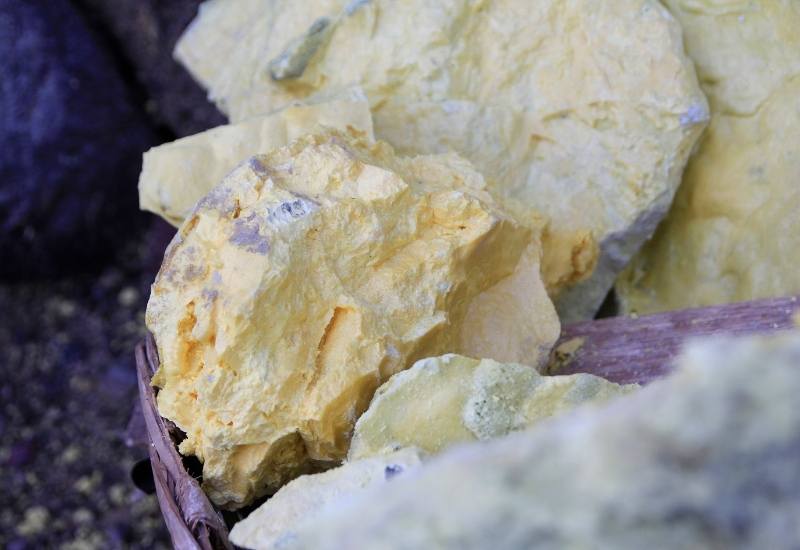
Sulfur is a very common, fast-acting soil acidifier. Sulfur soil amendments are easily obtained from a garden centre. (If your tomato plants require sulfur but your pH is already in balance, consider using Epsom salts).
When applying sulfur to your garden, follow the manufactures directions as excess sulfur can create salt buildups that can kill plants.
4: Chelated Fertilizer
Chelated fertilizers are often used to help tomatoes grow in extremely alkaline soils because the chelated fertilizers provide iron that is otherwise tied up in the soil. However, chelated fertilizers should not be used to grow food and should be avoided for several reasons.
First, chelated fertilizers do not fix an alkalinity issue, but are a band-aid quick-fix. Second, most chelated fertilizers contain EDTA which is a harmful chemical that has no business entering our soil or food chain.
Third, another common chelating agent is glyphosate which is a known carcinogen and causes many other serious health concerns.
How To Make Soil Less Acidic (Increase The Ph)
Sometimes, your soil will be too acidic even for tomatoes. Acidic soil has an overabundance of hydrogen which dislodges other nutrients on the surface of soil particles.
These nutrients are then unavailable to the plant or are washed away by rainwater. (I am not a scientist so I apologize for the bastardization of this intricate chemical process).
If your soil’s pH is below 5.5, here are some ways to increase the pH of your soil into the perfect range for your tomato plants.
1: Compost
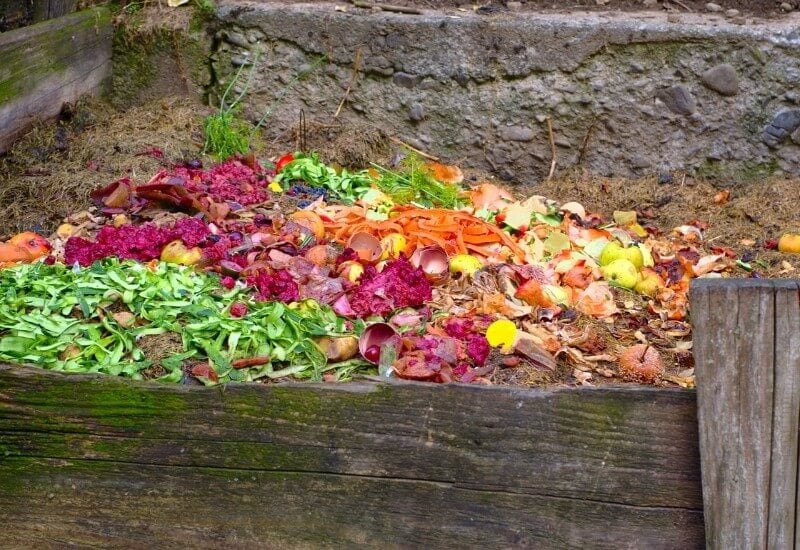
As we mentioned above, compost will stabilize your soil’s pH levels and is the most natural way to feed and improve your soil.
It is such a great soil amendment that it bears mentioning again. Add as much compost or well-rotted manure to your soil as you can.
2: Limestone (Calcium)
The most common way to make the soil less acidic, or increase the alkalinity, is to add calcium in the form of limestone. The limestone binds with the hydrogen in the acidic soil, creating calcium bicarbonate which is water-soluble and is naturally washed out of the soil.
Calcium has other benefits for your tomatoes as well, such as preventing blossom end rot. However, you might need to add calcium to your soil but you DON’T want to modify the acidity. In this case, use calcium nitrate or gypsum to increase the calcium without affecting your soil’s pH.
How much limestone to add will depend on your soil’s current pH and what type of soil you have. Most packages of lime come with application rates so follow the manufacturer’s directions.
3: Wood Ashes
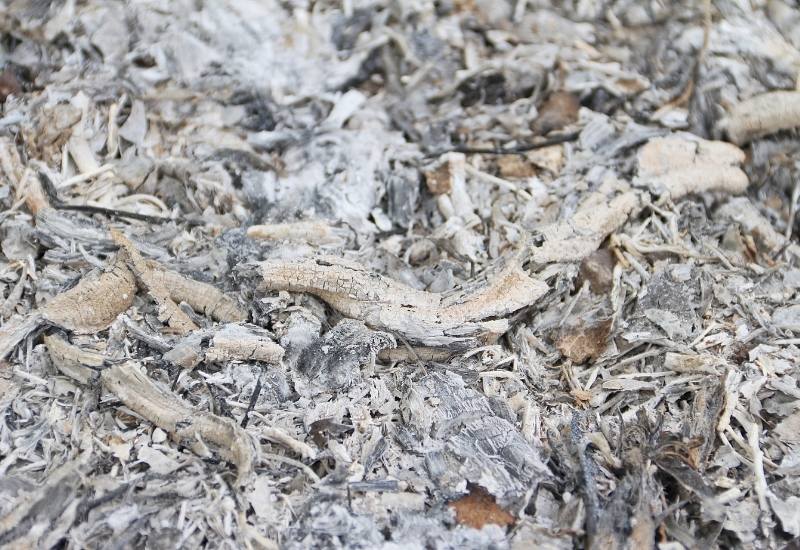
Wood ashes are a natural way to make amend acidic soil as they contain calcium carbonate. If you have a fireplace or burning barrel, wood ashes are also a very sustainable method to modify your soil.
They also contain potassium, phosphorus, and trace minerals, all of which are very beneficial for tomatoes. Don’t overdo wood ash applications, however, or it can make soil inhospitable: apply at a rate of 10kg (22lbs) per 100 sq meters (1,000 sq ft) every few years.
4: Remove Pine Needles
There is a lot of new evidence that suggests that pine needles do not appreciably affect soil pH around a tree. In fact, pine needles that have been dried or composted are often used as mulch with great success.
That being said, fresh pine needles that just fall from a tree are very acidic (3.2 to 3.8) so they can cause the soil to be acidic though not significantly.
If your soil is very acidic and you are trying to neutralize it, it is probably a good idea to avoid fresh green pine needles anyways.
Conclusion
Growing tomatoes can be a finicky business, and managing your soil’s pH levels is a great way to provide an ideal growing condition for these garden staples.
Adding compost has such universal benefits for your garden that it is worth mentioning it again, but I hope this article has given you a few other ideas that will help you amend your garden to grow the healthiest, best-tasting tomatoes that you can.

Written By
Amber Noyes
Amber Noyes was born and raised in a suburban California town, San Mateo. She holds a master’s degree in horticulture from the University of California as well as a BS in Biology from the University of San Francisco. With experience working on an organic farm, water conservation research, farmers’ markets, and plant nursery, she understands what makes plants thrive and how we can better understand the connection between microclimate and plant health. When she’s not on the land, Amber loves informing people of new ideas/things related to gardening, especially organic gardening, houseplants, and growing plants in a small space.

Like your article on managing ph levels, being new at growing tomatoes I’m currently trying to get my ph levels up to 6-7 in my 5gal containers
Ph is currently around 5
Dolomite Lime, (calcium magnesium carbonate), is the most common soil amendment for raising soil pH (reducing acidity), so mix the lime into the soil before planting.
I have large pots with tomatoes the PH is 7.5 and I have serious bottom rot on my beefsteak and they are very small just starting to yield???
Most often it is due to irregular watering inhibiting calcium absorption, but it can also be caused by too much nitrogen or magnesium. To reduce the incidence of Blossom End Rot, keep the soil evenly moist and well mulched. Don’t give the plants too much nitrogen.